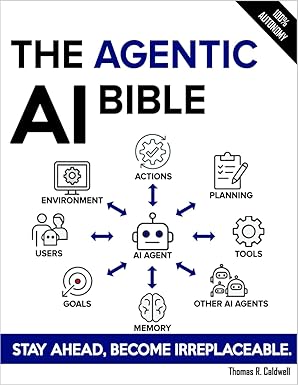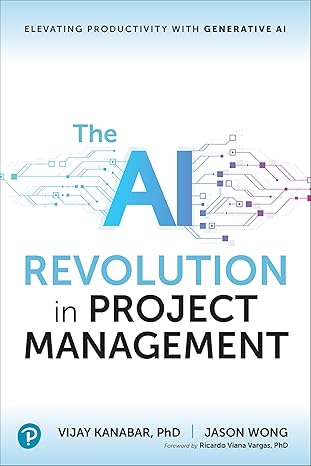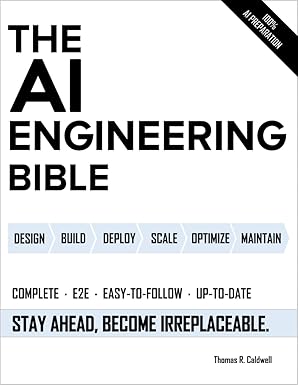From Sidekick to Strategist: The Next Evolution of AI Agents in the Enterprise

Ad Space
From Sidekick to Strategist: The Next Evolution of AI Agents in the Enterprise
For the past decade, AI agents have largely been treated as capable "sidekicks" — helpful, sometimes brilliant, but always in a supporting role. They wrote draft emails, debugged code, summarized meetings, and crunched through repetitive workflows.
Now, we are standing at the threshold of their next evolution: AI agents as strategic partners. This is not about replacing people, but rather about creating hybrid teams where human judgment and AI-driven insights co-create enterprise value.
In this article, I'll walk you through how organizations can navigate this transition — technically, culturally, and strategically.
Quick Start: Is Your Organization Ready?
Before diving deep, assess your readiness with these key questions:
- Data Maturity: Do you have clean, accessible data across departments?
- Cultural Openness: Are teams willing to trust AI recommendations?
- Technical Infrastructure: Can you integrate AI into existing workflows?
- Governance Framework: Do you have processes for AI oversight?
If you answered "yes" to 3+ questions, you're ready to begin the strategist transition.
1. Understanding the Shift: From Efficiency to Effectiveness
The Sidekick Era: Tactical Support
In the "sidekick" era, AI's primary role was to increase efficiency: fewer keystrokes, less time searching, fewer manual reports. That's still valuable — but it's tactical.
The Strategist Era: Strategic Partnership
The emerging "strategist" role for AI is about effectiveness: contributing to decision-making, helping shape priorities, surfacing unseen opportunities, and sometimes challenging assumptions.
"Our AI doesn't just schedule meetings anymore — it analyzes market trends and suggests which client conversations to prioritize." - Chief Strategy Officer, Fortune 500 Financial Services
The Three Pillars of Strategic AI
The leap from sidekick to strategist hinges on three things:
- Context depth – Agents need more than "task instructions." They need historical, operational, and strategic context.
- Trust loops – Humans must learn to trust AI with higher-stakes decisions, which requires transparency and explainability.
- Integration maturity – AI agents must be fully embedded in enterprise workflows, not bolted on.
When you promote an AI from note-taker to decision-influencer, you must upgrade not just its capabilities — but your culture.
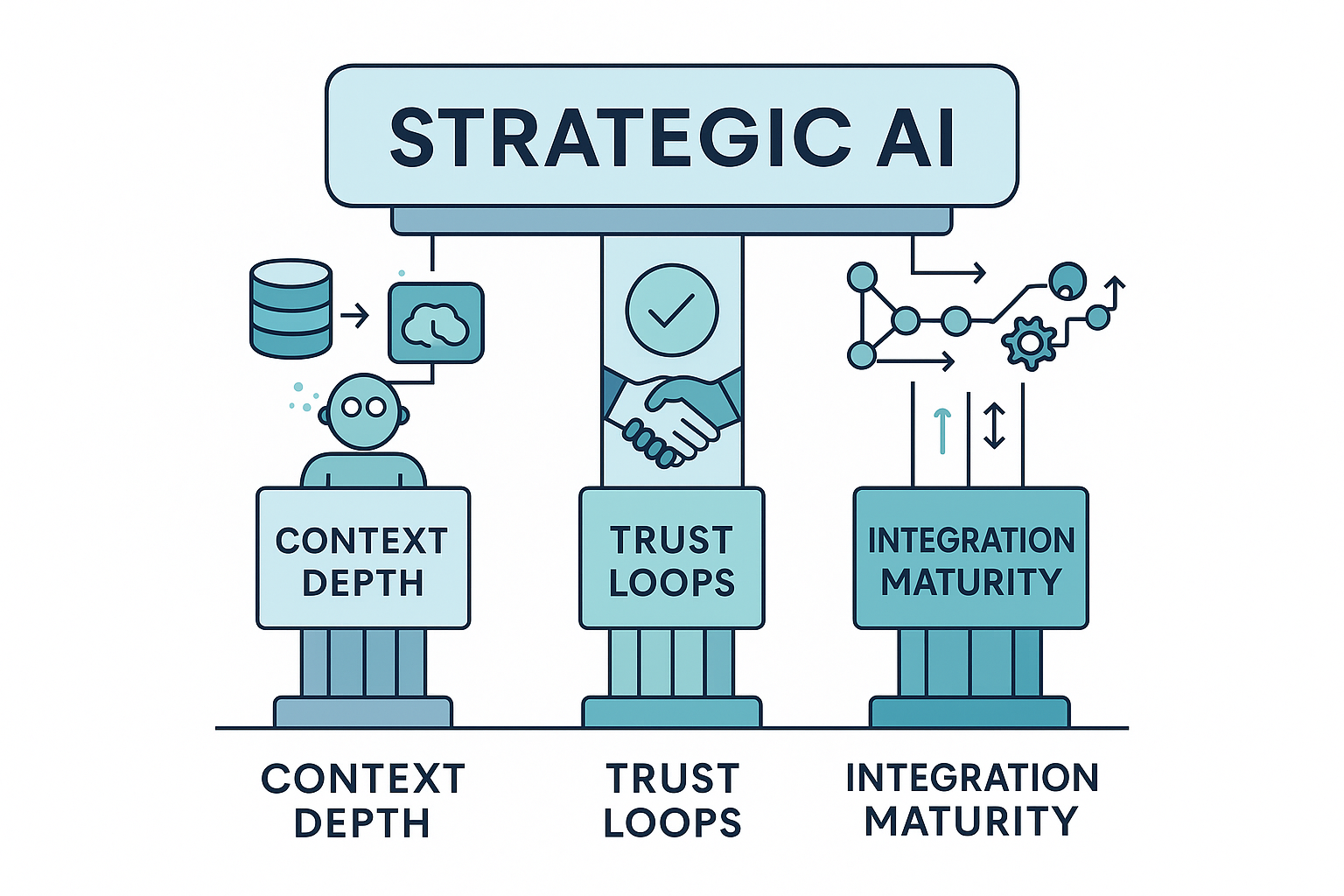
2. The Cultural Transformation: Building Strategic Partnership
From Tool to Teammate
Engineers, analysts, and managers are used to thinking of AI tools like Cline, Copilot, or Cursor as just that — tools. The strategist shift requires changing the narrative: "This agent is part of our team."
That doesn't mean anthropomorphizing AI. It means treating its contributions as inputs worthy of serious consideration, debate, and refinement.
Addressing Common Organizational Fears
Fear of Replacement
Strategy: Position AI as an amplifier, not a replacement. Show concrete examples where AI frees teams for higher-value work.
Example: A retail chain's AI agent handles routine supplier negotiations, freeing procurement managers to focus on strategic partnerships and innovation sourcing.
Fear of Bias and Errors
Strategy: Demonstrate robust governance frameworks, bias testing, and human-in-the-loop decision-making.
Example: A healthcare system implements AI for treatment recommendations with mandatory physician review and bias audits across demographic groups.
Fear of Loss of Professional Craft
Strategy: Highlight how AI allows deeper specialization by removing low-value repetitive tasks.
Example: Financial analysts spend 70% less time on data gathering and 200% more time on strategic market analysis and client advisory services.
3. Building Trust: The Foundation of Strategic AI
Trust is the currency of the strategist era. Without it, even the most capable AI remains a glorified calculator.
Transparency by Design
If an AI proposes a strategic shift, can it show its work? A strategist AI needs to provide traceable reasoning — not just answers.
Poor Example: "Switch suppliers to Vendor X"
Strategic Example: "Switch suppliers to Vendor X based on: 15% cost reduction, 99.7% reliability score vs current 94.2%, improved ESG metrics (carbon footprint -23%), and favorable 3-year contract terms with inflation protection."
The Progressive Trust Framework
Build trust systematically through escalating responsibilities:
- Month 1-3: Deploy AI for low-risk strategic recommendations
- Month 4-6: Evaluate results and gather team feedback
- Month 7-12: Gradually increase decision stakes as accuracy builds
- Year 2+: AI becomes integral to strategic planning processes
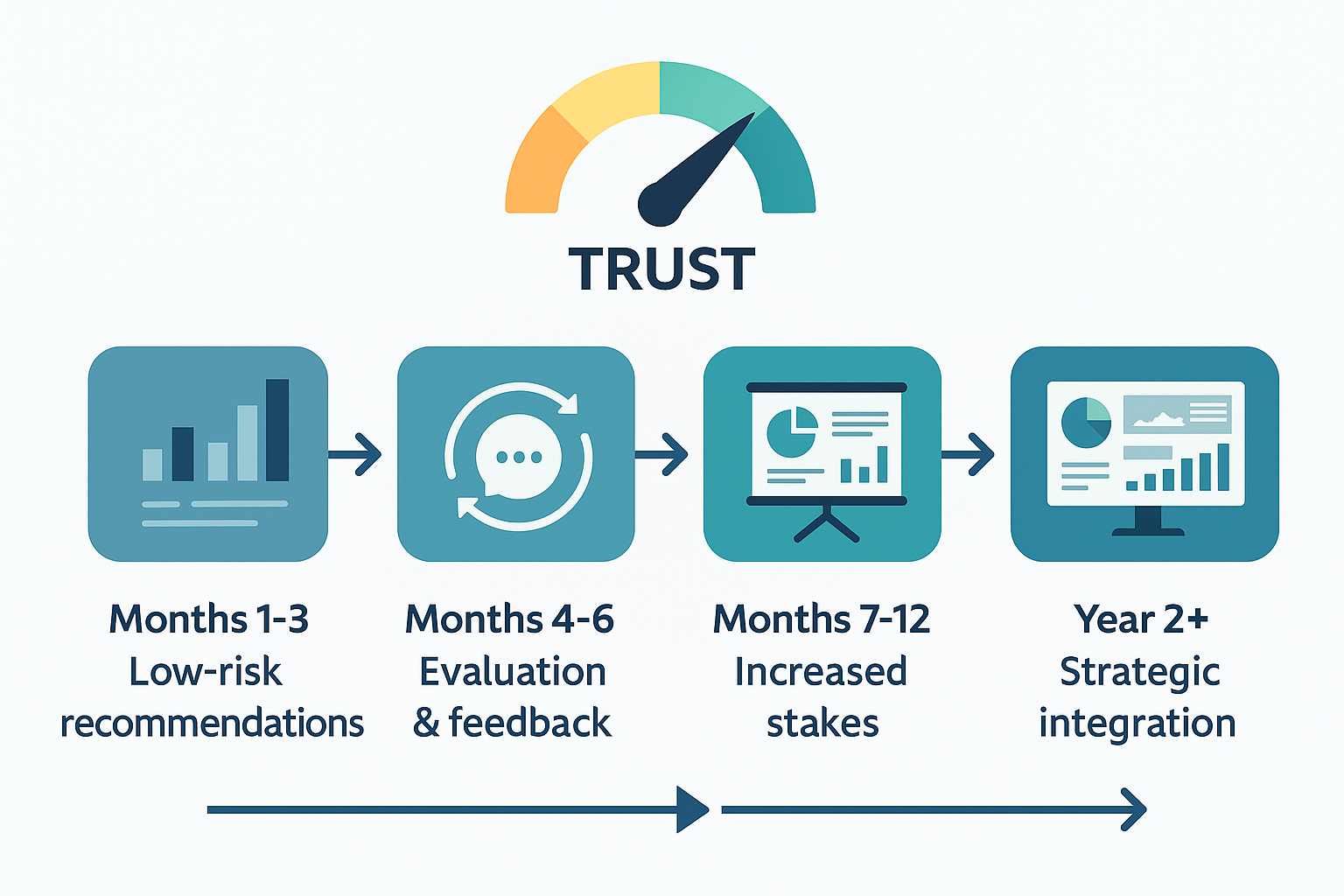
Governance and Compliance Considerations
AI Oversight Committee
Establish a cross-functional team including:
- Technical representatives (AI/ML engineers, data scientists)
- Business stakeholders (strategy, operations, legal)
- Risk management (compliance, security, ethics)
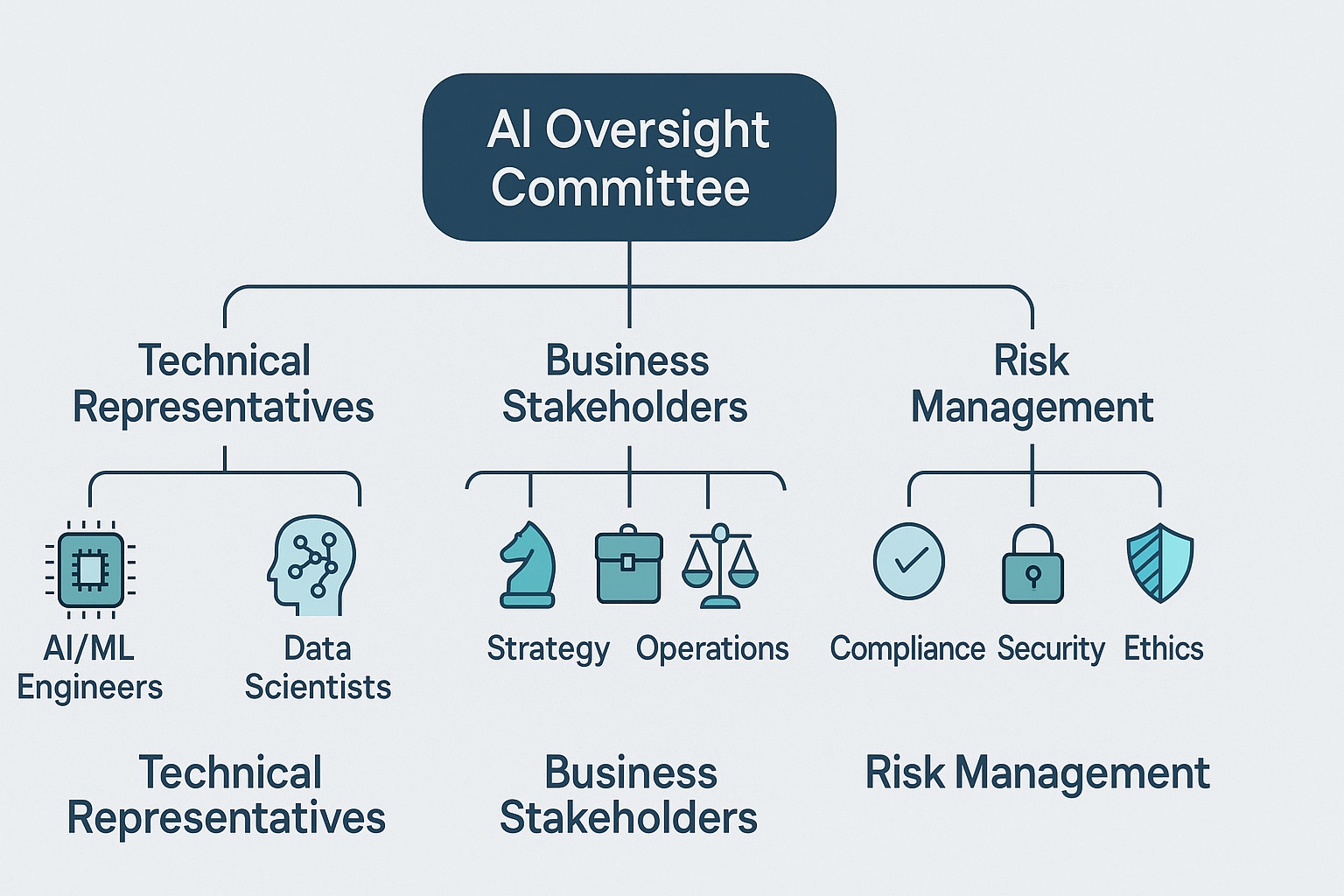
Regulatory Compliance Framework
Key considerations for strategic AI deployment:
- Data governance: GDPR, CCPA compliance for decision-making data
- Financial regulations: SOX compliance for AI-driven financial decisions
- Industry-specific: Healthcare (HIPAA), Financial Services (Dodd-Frank), etc.
- Audit trails: Complete decision lineage for regulatory review
You can measure AI trustworthiness over time with a Strategic Recommendation Accuracy Score (SRAS):
- Precision: Of AI recommendations accepted, how many yielded positive results?
- Recall: How often did the AI correctly surface opportunities that humans missed?
- Confidence Calibration: Do the AI's confidence levels match reality?
- Bias Detection: Regular audits across different demographic groups and scenarios
Implementation Framework:
class StrategicAITrustMetrics:
def __init__(self):
self.precision_history = []
self.recall_history = []
self.confidence_calibration = []
self.bias_scores = {}
def calculate_sras(self, time_period='monthly'):
return {
'precision': np.mean(self.precision_history[-time_period:]),
'recall': np.mean(self.recall_history[-time_period:]),
'calibration': self.confidence_calibration_score(),
'bias_score': self.calculate_bias_metrics()
}
Integrate SRAS into your monitoring dashboard alongside traditional observability metrics.
4. Technical Prerequisites: Building the Strategic AI Foundation
Even the most inspiring cultural transformation will fail if the AI lacks the right technical foundation.
Core Technical Requirements
Persistent Context Memory
Use advanced memory systems to maintain institutional knowledge:
- MCP servers like KnowledgeGraphMemory for long-term context
- Vector databases for semantic search across enterprise data
- Graph databases for relationship mapping between entities
Scenario Simulation Capabilities
Allow agents to model and test strategic choices before recommending them:
- Monte Carlo simulations for risk assessment
- Market modeling for competitive analysis
- Financial modeling for ROI projections
Domain-Specific Fine-Tuning
Ensure outputs match company standards:
- Style alignment with corporate communication
- Regulatory compliance built into decision frameworks
- Industry-specific knowledge and terminology
# Strategic AI Configuration
mcp_servers:
KnowledgeGraphMemory: "http://localhost:9002"
SequentialThinking: "http://localhost:9090"
ScenarioSimulator: "http://localhost:9200"
MarketDataConnector: "http://localhost:9300"
ComplianceChecker: "http://localhost:9400"
context_offload_enabled: true
context_summary_target_tokens: 150
strategic_mode: true
# Trust and Governance
trust_metrics_enabled: true
bias_detection: true
decision_auditing: true
regulatory_compliance_checks: ["SOX", "GDPR", "industry_specific"]
This setup allows your AI to remember enterprise decisions, plan multi-step reasoning, simulate potential outcomes, and maintain compliance.
Integration Architecture Patterns
Hub-and-Spoke Model
Central AI strategist with specialized agents for different domains:
- Finance AI: Budget analysis, forecasting, risk assessment
- Market AI: Competitive intelligence, customer insights
- Operations AI: Supply chain optimization, resource allocation
Federated Intelligence
Distributed AI agents that share insights across departments while maintaining data sovereignty and security boundaries.

5. Strategic Impact Measurement: Proving AI Value
One of the most common C-suite questions: "How do we know the AI is actually strategic, not just clever?"
Primary Strategic Metrics
Decision Velocity
- Measurement: Time from data availability to strategic decision
- Target: 40-60% improvement in decision speed
- Example: Market entry decisions reduced from 3 months to 6 weeks
Opportunity Capture Rate
- Measurement: Percentage of AI-surfaced opportunities that teams acted on
- Target: 25-40% conversion rate for high-confidence recommendations
- Example: AI identified 47 market opportunities; teams pursued 18, with 14 yielding positive ROI
Risk Mitigation Effectiveness
- Measurement: Cost of risks avoided vs. potential impact
- Target: 3:1 ratio of prevented costs to AI investment
- Example: AI prevented $2.3M in potential losses from supplier failures
Advanced Analytics Dashboard
Create a Strategic AI Performance Dashboard tracking:
Executive Summary:
├── ROI Calculator (6-month rolling)
├── Trust Score (SRAS trending)
├── Decision Impact Tracker
└── Risk Prevention Summary
Department Views:
├── Finance: Budget optimization, forecast accuracy
├── Sales: Lead prioritization, pricing optimization
├── Operations: Efficiency gains, cost reductions
└── Strategy: Market opportunity identification
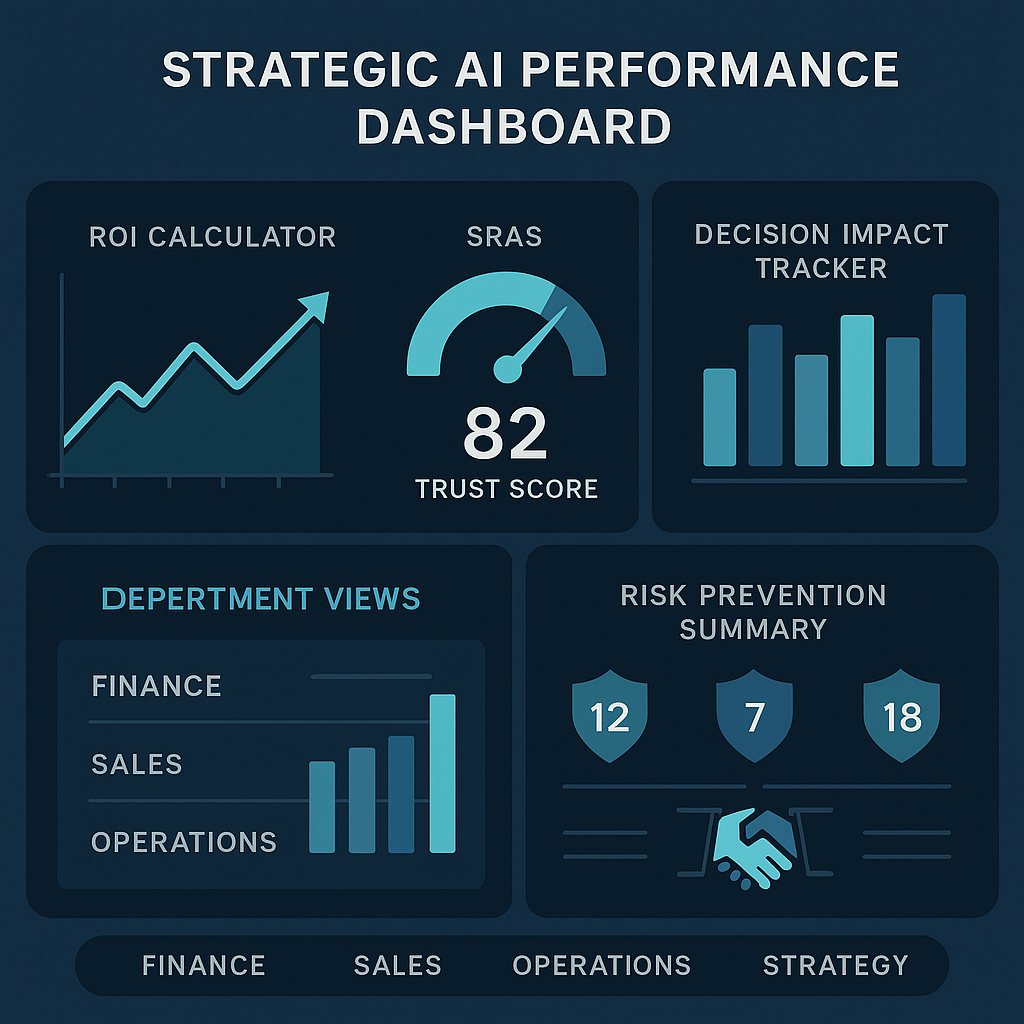
6. Real-World Success Stories: Strategic AI in Action
Case Study 1: Manufacturing - $12M Saved Through Predictive Logistics
Company: Global automotive parts manufacturer
Challenge: Complex supply chain disruptions costing millions in delays
AI Implementation: Strategist AI analyzed correlations between maintenance logs, weather data, geopolitical events, and shipping patterns.
Strategic Recommendation: Alter shipping schedules and inventory positioning based on predictive models.
Results:
- $12M saved in a single quarter from avoided delays
- 23% improvement in on-time delivery
- 15% reduction in emergency freight costs
Key Success Factors:
- AI had persistent context across logistics, maintenance, and external data feeds
- Trust was high enough for executives to act on recommendations
- Decision was validated and credited to AI in quarterly reviews
Case Study 2: Financial Services - Risk Assessment Revolution
Company: Regional investment bank
Challenge: Manual risk assessment couldn't keep pace with market volatility
AI Implementation: Strategic AI analyzing market patterns, client portfolios, and macroeconomic indicators.
Strategic Recommendation: Dynamic portfolio rebalancing based on real-time risk assessment.
Results:
- $47M in client losses prevented during market downturn
- 34% improvement in risk-adjusted returns
- 60% faster response to market changes
Case Study 3: Healthcare System - Resource Optimization
Company: Multi-hospital healthcare network
Challenge: Inefficient resource allocation leading to patient care delays
AI Implementation: Strategic AI analyzing patient flow, staff scheduling, and equipment utilization.
Strategic Recommendation: Predictive resource allocation and dynamic staff deployment.
Results:
- 22% reduction in patient wait times
- $8.3M annual savings from optimized resource utilization
- 18% improvement in patient satisfaction scores
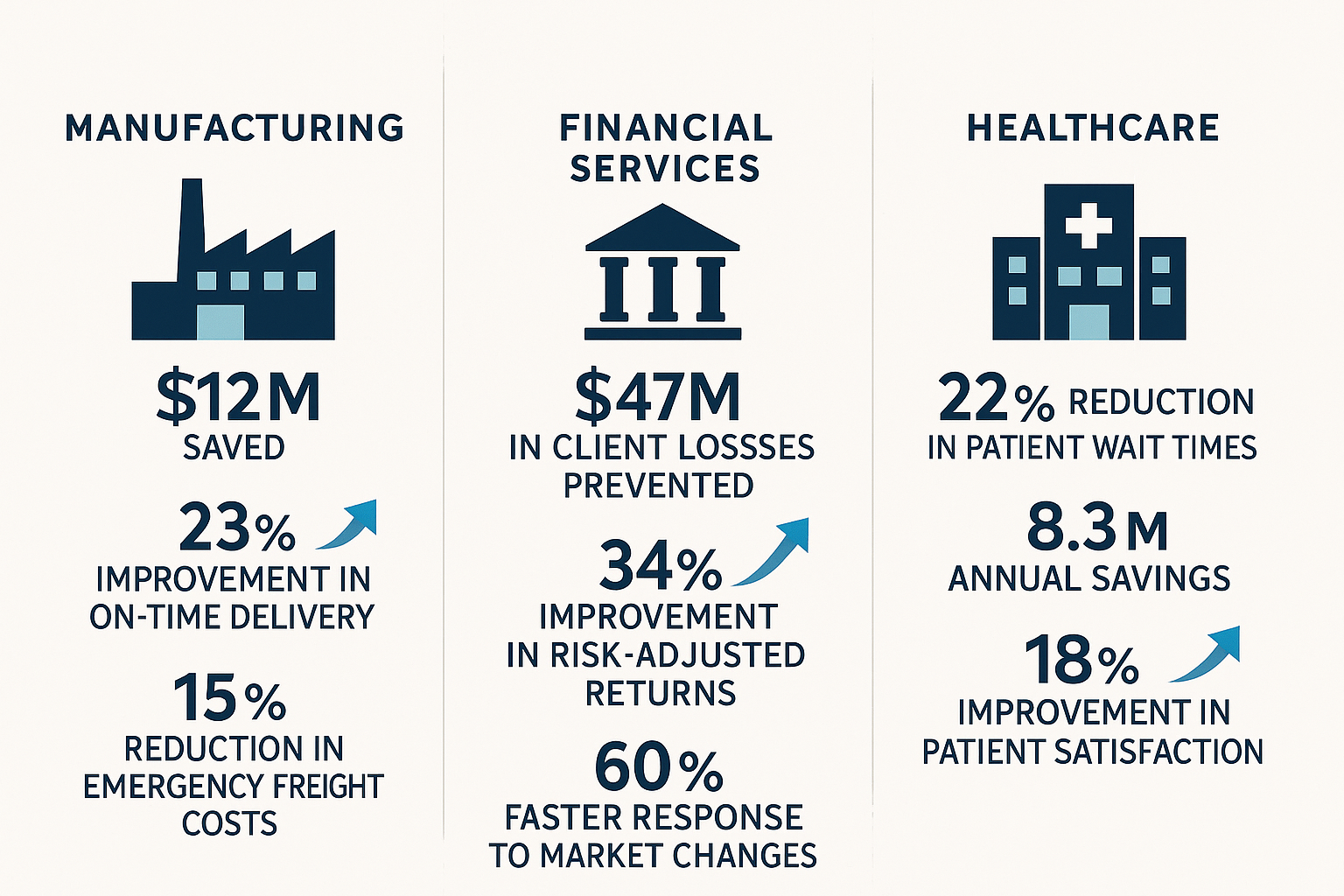
7. Implementation Roadmap: Your 12-Month Strategic AI Journey
Phase 1: Foundation (Months 1-3)
Focus: Infrastructure and team preparation
Key Activities:
- Establish AI governance committee
- Audit data quality and accessibility
- Select pilot use cases (low-risk, high-visibility)
- Implement basic trust metrics
- Train teams on AI collaboration principles
Success Criteria: Team buy-in, clean data pipelines, governance framework
Phase 2: Pilot Deployment (Months 4-6)
Focus: Limited strategic AI deployment
Key Activities:
- Deploy AI for 2-3 strategic decision types
- Implement human-in-the-loop workflows
- Begin trust score tracking
- Gather feedback and iterate
- Document decision outcomes
Success Criteria: Positive ROI on pilot decisions, growing team confidence
Phase 3: Scaling Success (Months 7-9)
Focus: Expanding AI strategic involvement
Key Activities:
- Scale to additional decision types
- Implement advanced analytics dashboard
- Begin compliance audits
- Cross-functional AI collaboration
- Advanced scenario modeling
Success Criteria: Multiple departments using strategic AI, measurable business impact
Phase 4: Strategic Integration (Months 10-12)
Focus: AI as integral strategic partner
Key Activities:
- Quarterly strategic planning with AI input
- Advanced predictive capabilities
- Industry-specific optimization
- Competitive intelligence integration
- Full trust score implementation
Success Criteria: AI integral to strategic planning, documented competitive advantage
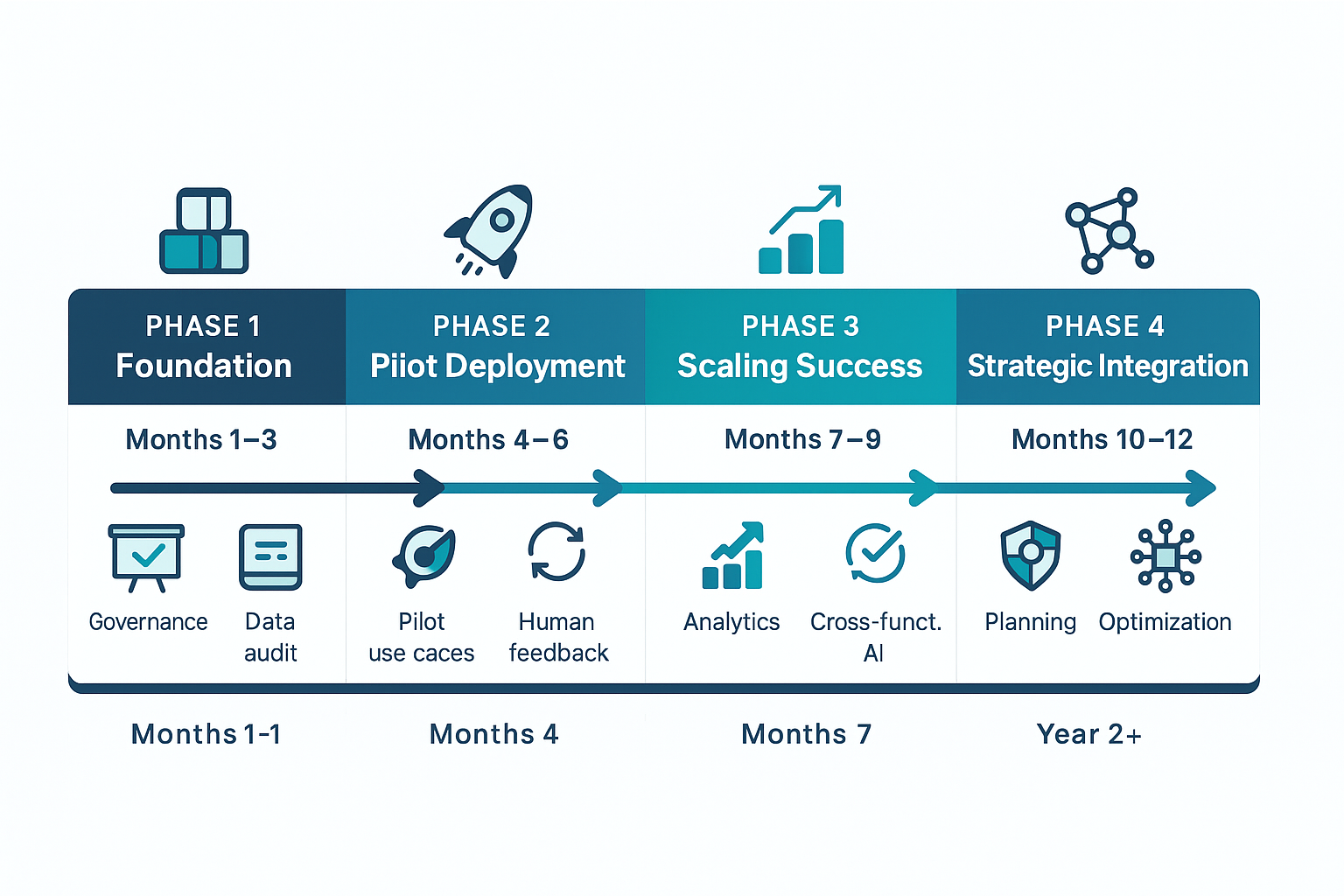
8. Common Pitfalls and How to Avoid Them
Pitfall 1: Moving Too Fast
Risk: Overwhelming teams and creating resistance
Solution: Implement progressive trust framework with clear milestones
Pitfall 2: Inadequate Governance
Risk: Compliance violations and ethical concerns
Solution: Establish oversight committee before deployment
Pitfall 3: Technology-First Approach
Risk: Ignoring cultural and organizational factors
Solution: Balance technical capabilities with change management
Pitfall 4: Lack of Transparency
Risk: Teams losing trust when AI makes errors
Solution: Always provide explainable AI reasoning and maintain audit trails
Pitfall 5: Insufficient Success Measurement
Risk: Inability to prove value or optimize performance
Solution: Implement comprehensive metrics from day one
9. Legal and Compliance Checklist
Data Governance Requirements
- Data lineage tracking: Complete audit trail for all strategic decisions
- Privacy compliance: GDPR, CCPA adherence for personal data
- Data retention policies: Clear guidelines for AI training and decision data
- Cross-border considerations: International data transfer compliance
Regulatory Compliance
- Financial services: SOX, Dodd-Frank, Basel III considerations
- Healthcare: HIPAA compliance for patient data
- Manufacturing: Safety regulations and quality standards
- General: Industry-specific regulatory requirements
Risk Management Framework
- Bias testing: Regular audits across demographic groups
- Decision appeals process: Human review mechanism for AI decisions
- Liability frameworks: Clear responsibility chains for AI recommendations
- Insurance considerations: Coverage for AI-driven decisions
10. Future-Proofing Your Strategic AI
Emerging Capabilities to Watch
Multi-Modal Strategic Analysis
AI agents that can process text, images, video, and audio for comprehensive strategic insights.
Autonomous Strategic Planning
AI systems that can develop and execute multi-step strategic initiatives with minimal human oversight.
Predictive Market Modeling
Advanced simulation capabilities that can model complex market scenarios and competitive responses.
Building Adaptive Systems
Design your strategic AI to evolve:
- Continuous learning from strategic outcomes
- Adaptive governance that scales with capabilities
- Flexible integration points for new AI technologies
- Stakeholder feedback loops for ongoing improvement
Frequently Asked Questions
Q: How long does it take to see ROI from strategic AI?
A: Most organizations see initial positive returns within 3-6 months for pilot implementations, with full ROI typically achieved within 12-18 months.
Q: What's the minimum team size needed for strategic AI implementation?
A: A core team of 3-5 people can manage initial implementation: one technical lead, one business stakeholder, one data specialist, and 1-2 domain experts.
Q: How do we handle AI mistakes in strategic decisions?
A: Implement a robust governance framework with human oversight, clear escalation procedures, and learning mechanisms to improve future decisions.
Q: Can small companies benefit from strategic AI?
A: Yes, but start with focused use cases and cloud-based solutions to minimize infrastructure requirements.
Key Takeaways
"The organizations that master strategic AI partnerships won't just be more efficient — they'll think differently, decide faster, and adapt to change with unprecedented agility."
Essential Success Factors:
- Cultural transformation comes before technical implementation
- Trust building is systematic, not accidental
- Governance frameworks are non-negotiable for enterprise deployment
- Progressive scaling prevents overwhelm and resistance
- Measurable impact is essential for continued investment
The Strategic Advantage: Organizations that successfully transition AI from sidekick to strategist will create compounding competitive advantages through superior decision-making, faster market adaptation, and enhanced strategic thinking capabilities.
Next Steps: Start Your Strategic AI Journey
Immediate Actions (This Week)
- Assess your readiness using the quick start checklist
- Identify 2-3 pilot use cases for strategic AI implementation
- Form your governance committee with key stakeholders
- Audit your data quality for strategic decision-making
Short-Term Goals (Next 30 Days)
- Complete technical infrastructure assessment
- Develop team training plan for AI collaboration
- Create measurement framework for tracking AI impact
- Begin cultural change management initiatives
Strategic Planning (Next Quarter)
- Launch pilot strategic AI implementation
- Establish trust metrics and monitoring
- Document lessons learned and iterate
- Plan for scaling successful use cases
Related Reading:
- Unlocking Agent Potential: 7 MCP Servers That Supercharge Your AI Agents
- The Agentic Feedback Loop: How to Teach AI Agents Your Company's Unique Style
- Human-in-the-Loop AI Agents: Balancing Automation with Human Oversight
Ad Space
Recommended Tools & Resources
* This section contains affiliate links. We may earn a commission when you purchase through these links at no additional cost to you.
📚 Featured AI Books
OpenAI API
AI PlatformAccess GPT-4 and other powerful AI models for your agent development.
LangChain Plus
FrameworkAdvanced framework for building applications with large language models.
Pinecone Vector Database
DatabaseHigh-performance vector database for AI applications and semantic search.
AI Agent Development Course
EducationComplete course on building production-ready AI agents from scratch.
💡 Pro Tip
Start with the free tiers of these tools to experiment, then upgrade as your AI agent projects grow. Most successful developers use a combination of 2-3 core tools rather than trying everything at once.
🚀 Join the AgentForge Community
Get weekly insights, tutorials, and the latest AI agent developments delivered to your inbox.
No spam, ever. Unsubscribe at any time.

